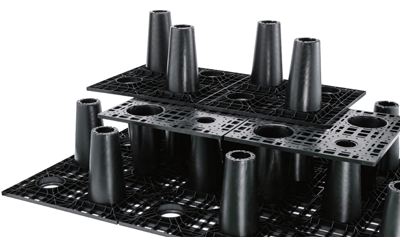What Is a Rainwater Harvesting Tank?
 A rainwater harvesting tank, also known as a rainwater tank, is a storage facility for temporarily holding rainwater.
A rainwater harvesting tank, also known as a rainwater tank, is a storage facility for temporarily holding rainwater.
These tanks effectively store rainwater collected from roofs via rain gutters, helping prevent flood damage and allowing the water to be used for purposes like watering plants. Urbanization has led to increased concrete and asphalt surfaces, reducing the ground’s ability to absorb rainwater and increasing flood risks.
Before urban development, rainwater naturally infiltrated and evaporated from the ground surface, reducing river inflow. However, deforestation and reduction in reservoirs have exacerbated urban flooding issues.
In urban environments, where rainwater struggles to percolate into the ground, increased surface runoff leads to flooding. Rainwater harvesting tanks are therefore essential to mitigate surface runoff and manage water flow during heavy rainfall.
Classification of Rainwater Harvesting Tanks
There are generally two types of rainwater harvesting tanks: aboveground and underground.
Aboveground Rainwater Harvesting Tanks
Aboveground tanks, or surface storage tanks, are smaller in size and commonly found in residential complexes, parking lots, schools, and parks. Their capacity is determined based on safety and space considerations.
Underground Rainwater Harvesting Tanks
Underground tanks are larger and often used in public works projects. They are categorized into underground space storage facilities, typically part of buildings or public areas, and underground void storage facilities, located in areas like parking lots and grounds. These facilities use materials like concrete, plastic, resin, and steel.
Uses of Rainwater Harvesting Tanks
Rainwater harvesting tanks are used in various visible and invisible locations, from residential properties to underground spaces in parks and schoolyards. They are increasingly important in urban areas to manage concentrated downpours and mitigate flooding.
Small-scale tanks and infiltration systems in homes supplement the water retention capacity in urban areas, while large underground tanks, known as precast tanks, are being considered for urban implementation.
How to Choose a Rainwater Harvesting Tank
The choice of a rainwater harvesting tank depends on the installation environment, including land, building conditions, and safety considerations. Reused septic tanks or plastic-type block materials are potential options, with block materials offering high porosity and strength.
Other Information on Rainwater Harvesting Tanks
1. Subsidies for Rainwater Harvesting Tanks
Municipalities offer subsidy programs for rainwater harvesting tanks, with varying requirements based on tank type and intended use. Subsidies may be available for both individual and business use, typically for tanks with a capacity of 100 liters or more.
2. The Obligation to Install Rainwater Harvesting Tanks
There is generally no obligation to install rainwater harvesting tanks, but some regions affected by heavy rainfall may require them by ordinance.
3. Future Demand for Rainwater Harvesting Tanks
With the increasing occurrence of extreme weather due to global warming, the demand for rainwater harvesting tanks is expected to grow, particularly for smaller, cost-effective models. However, the development of affordable peripheral equipment, like water level gauges, is necessary to enhance their convenience.